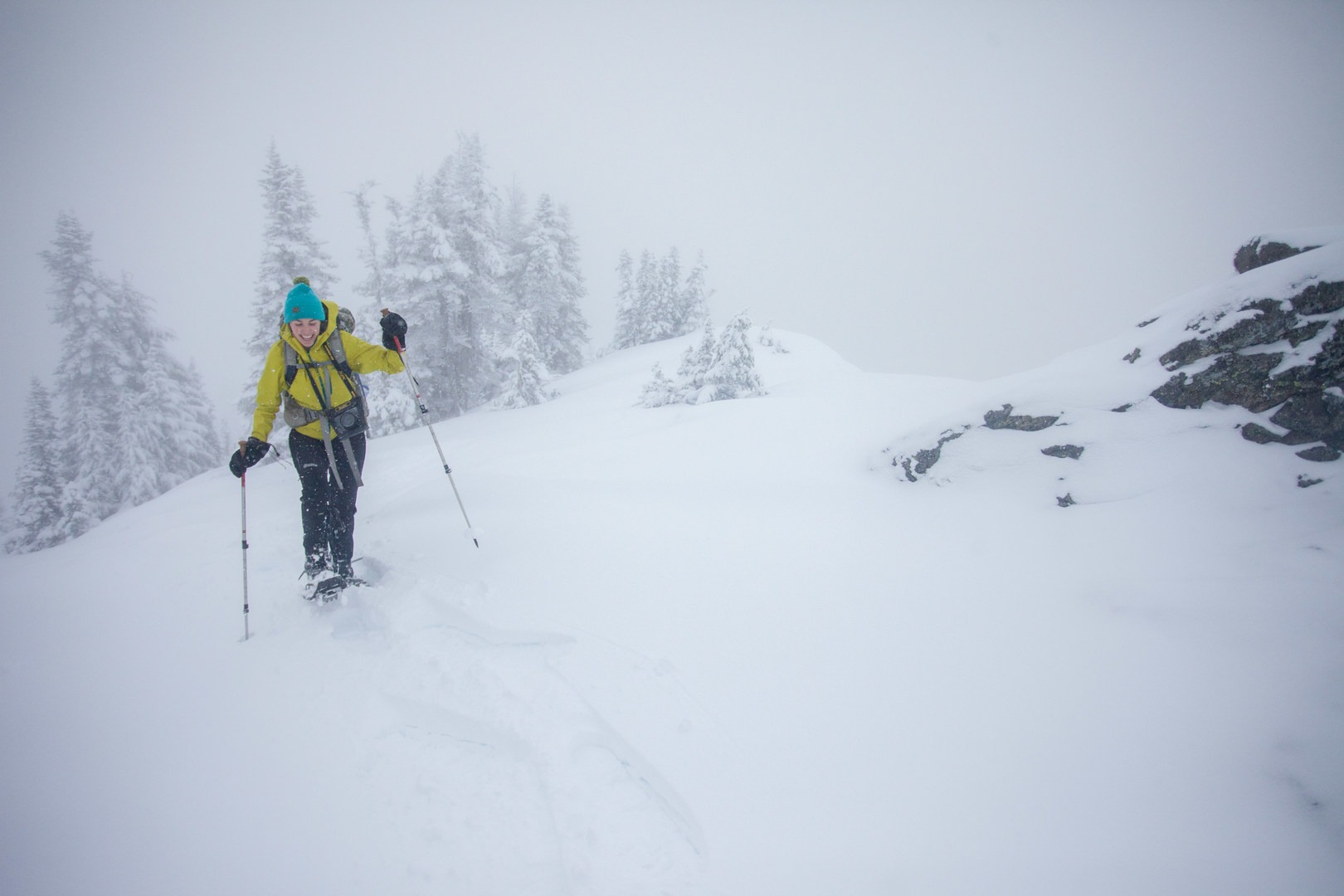You are here
Mount Dickerman is a great option for the snowshoer who has avalanche safety skills and is looking to try out bigger days with more vertical. Mount Dickerman is not a good option for a beginner to snowshoeing, as it involves traveling through terrain that could avalanche. In addition, snowshoeing up 4,000 feet of gain is dramatically different than being able to hike up 4,000 feet, as snowshoes add weight and are a fair amount more strenuous. However, if you have the appropriate gear and know-how, Mount Dickerman is a wonderful and satisfying challenge with wonderful views from the summit (as long as the weather is good enough to see them)!
Notes
- Seasonality: Mount Dickerman is a great hike in the summer, and typically gets snow by late October. By early to mid-November, Dickerman will generally require snowshoes or microspikes, which is generally the case into May or so.
- Road Closures: This is the most frustrating thing about Mount Dickerman. It's accessed via the Mountain Loop Highway, which is a dirt road (in parts) and closes during the middle of the winter. There's no date when it necessarily closes or opens, and it's only based on snowfall. When it's closed, you can still access Dickerman, but you'll have to hike a long way along the road, and this makes the trip pretty difficult. In general, it seems like the road closes in late November and opens up in March or April, but this is highly dependent on the snowfall in any given year. You can check this Forest Service map or this Forest Service page, but either way, make sure you check! If the road is closed, you will not be able to access this trip!
- Gear
- Avalanche Gear/Knowledge: If you're going to be out in the snow, especially out on open slopes (as you will be on Mount Dickerman), you need to know how to make avalanche-aware decisions, and to carry avalanche gear (beacon, shovel, probe). If you don't have this skillset, go to a few classes with NWAC (Northwest Avalanche Center) or take an AIARE 1, which will teach you the beginnings of avalanche awareness.
- Traction/Floatation: The Cascades can be tricky on this front. Most winter travelers will find themselves asking this exact question - do I need traction or floatation/microspikes or snowshoes? - and it generally comes down to a few simple questions (which can be tricky to answer)
- How long has it been since the last big snowfall? If it's recent, floatation (like snowshoes) will be important. If it's been a while, you might be able to get by with microspikes (which weigh less and are easier to use).
- How many people travel this trail? The more traveled the trail, the more likely the trail will already be packed down by other travelers. Dickerman tends not to get too much travel, so you'll need to think more about how recently it snowed.
- Other Gear: Climbing Mount Dickerman in the winter is a lot more like winter mountaineering than it is like summer hiking, so make sure you're bringing the appropriate number of layers, as well as emergency gear (like extra food, an emergency shelter, etc) and the other 10 Essentials.
- Weather/Navigation: Winter travel requires a lot more research and preparation beforehand, as the conditions get much much nastier. If there's been a big storm recently, you may be responsible for breaking the trail up, which means you need to know where to go! And if a bad storm rolls in while you're up there, you have to know how to get down! So make sure you're researching these things heavily, and bringing GPS tracks and the know-how to use them!
- Length of Day: Remember, in the middle of winter, the days are quite short, so you will probably be beginning or ending your day in the dark!
The Climb
You'll start in the forest, and the trail heads east for about a third of a mile before beginning a very consistently steep climb. From here, you'll climb up a dizzying number of switchbacks. Depending on the season (late fall or early spring), you may be wearing or carrying your snowshoes or microspikes for this section. Whenever the snow becomes consistent, you'll strap on your traction/floatation and continue on up! Within your first 1,000 feet, you'll almost certainly be accosted by Grey Jays - a fluffy grey ball of feathers with a becoming little black cap. Grey Jays are absurdly cute, but also annoyingly persistent. They will continually beg you for food - don't feed them or they'll be even more annoying!
Continue on your way up the continuously steep trail. At 4,400 feet, you'll cross over a small creek, make sure you don't fall through the snow and land in it! From there, there's a summer trail continuing up that gully, but don't follow it - contour left and head up the lower angle ridge - there's less avalanche danger here. From here, you'll roughly follow the west ridge of Dickerman up to the summit, being careful of the open slopes.
Soon enough, you'll reach the craggy summit! It's is shockingly steep and cliffy on the north side, so be careful when you get up! Enjoy the views of the surrounding mountains, especially toward Glacier Peak to your east!
Once you're ready, plunge-step back down the trail until you run out of snow, then finish up your trip!
Logistics + Planning
Current Weather: Powered by Dark Sky






















Comments
Sign In and share them.